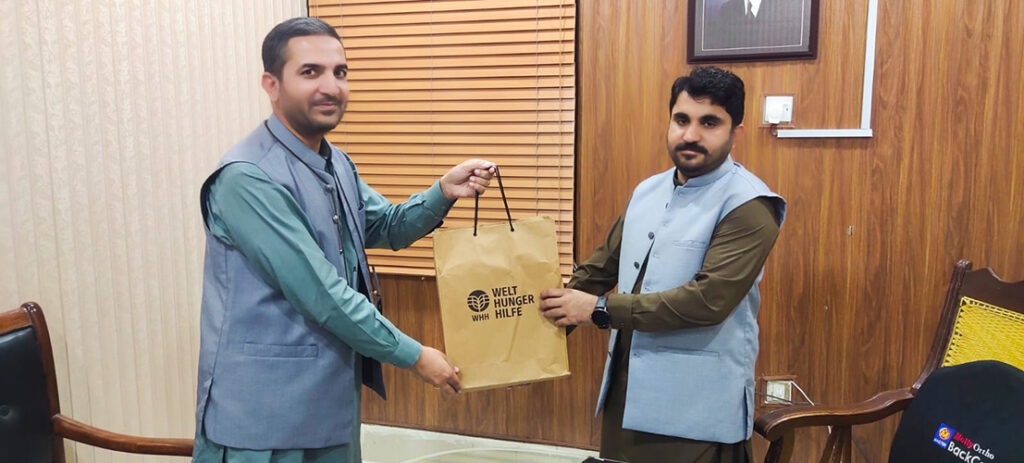Risk Assessment Approach In the ever-evolving landscape of rural development, understanding and mitigating risks are paramount. Today, we delve into the meticulous risk assessment exercise conducted by Rizwan Jalil of the Fast Rural Development Program and Mr. Syed Asim from Welt Hunger Hilfe. This comprehensive examination involved engaging with project personnel, coordinating with the Additional Deputy Commissioner Dadu, and visiting crucial vulnerability points, such as the Johi branch, kaari mori, and MNV drain. Let’s journey through the intricacies of their assessment and the implications it carries for rural development.
The Importance of Risk Assessment in Development Initiatives
Identifying Potential Pitfalls
In any development project, pitfalls can lurk around unforeseen corners. This section explores the significance of identifying potential risks and the proactive measures essential for successful project execution. The assessment today went beyond the surface, uncovering hidden challenges that could have jeopardized the Fast Rural Development Program.
Engaging with Project Personnel: A Collaborative Approach
Harnessing Local Knowledge
Engagement with project personnel is not just a formality but a strategic move to tap into local expertise. This section explores how Rizwan Jalil and Mr. Syed Asim actively engaged with the individuals on the ground, gaining insights that data alone might miss. The human touch in development is irreplaceable, and this exercise exemplified that.

Coordination Meeting with Additional Deputy Commissioner Dadu
Aligning with Local Authorities
Successful development is a collaborative effort, and aligning with local authorities is pivotal. The coordination meeting with the Additional Deputy Commissioner Dadu sheds light on how bureaucratic cooperation can streamline projects and address challenges efficiently. This is a crucial aspect often overlooked but undeniably crucial.
Field Visits: Unveiling Vulnerability Points
Beyond Office Desks
A risk assessment is incomplete without on-the-ground exploration. This section details the field visits to vulnerable points like the Johi branch, kaari mori, and MNV drain. Understanding the nuances of these locations is akin to reading the pulse of the community. Rizwan Jalil and Mr. Syed Asim walked the terrain, absorbing the challenges firsthand.
The Puzzle of Perplexity: Unraveling Challenges
Navigating the Unknown
Perplexity in development is akin to navigating uncharted waters. This section explores how the risk assessment exercise embraced the complexity, dissecting challenges to provide clarity. Embracing the puzzle, rather than shying away, is a skill that sets successful development professionals apart.

Bursting the Bubble: Addressing Immediate Concerns
Swift and Strategic Solutions
Burstiness in development is about addressing immediate concerns swiftly. This section delves into how Rizwan Jalil and Mr. Syed Asim, during their risk assessment, not only identified challenges but proposed strategic solutions. The ability to burst the bubble of issues in real-time is a testament to effective development leadership.
A Call to Action
The risk assessment today wasn’t just a routine exercise; it was a call to action. The questions raised at the beginning find their answers in the proactive engagement with project personnel, the coordination with local authorities, and the on-the-ground exploration of vulnerability points. As we navigate the intricate web of rural development, let this assessment be a beacon, guiding us to not just identify risks but to confront and conquer them. After all, in the realm of development, every challenge is an opportunity waiting to be unveiled.
Remember, the success of rural development lies not just in planning but in the ability to adapt, engage, and burst through challenges with unwavering determination.

FAQs
Q1: Why is risk assessment crucial in rural development?
A1: Risk assessment helps uncover hidden challenges, ensuring proactive measures for successful project execution.
Q2: How did the assessment engage with local authorities?
A2: The coordination meeting with the Additional Deputy Commissioner Dadu showcased the importance of aligning with local authorities for efficient project management.
Q3: Why are field visits essential in risk assessment?
A3: On-the-ground exploration, as demonstrated in visits to vulnerable points, provides nuanced insights crucial for understanding community dynamics.


